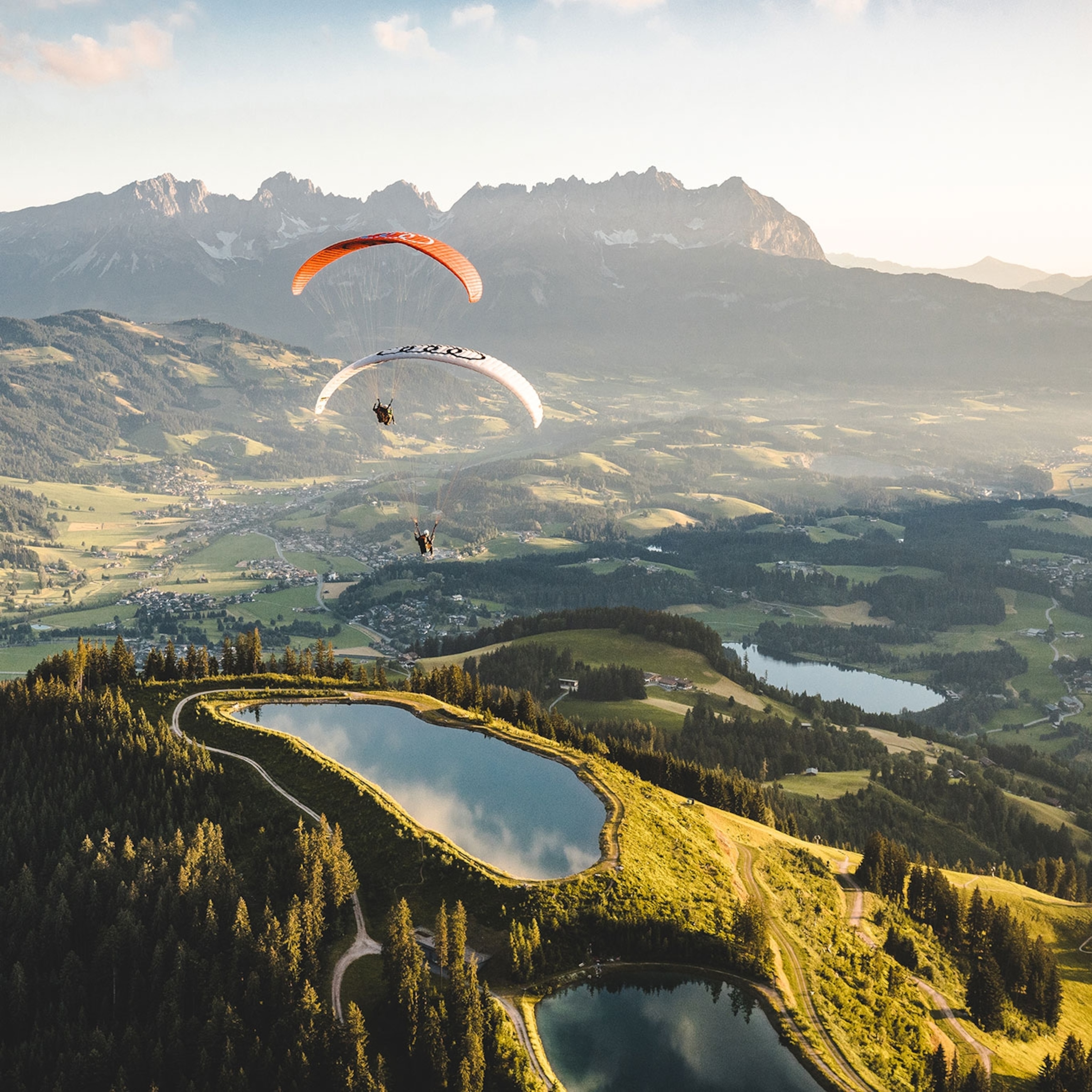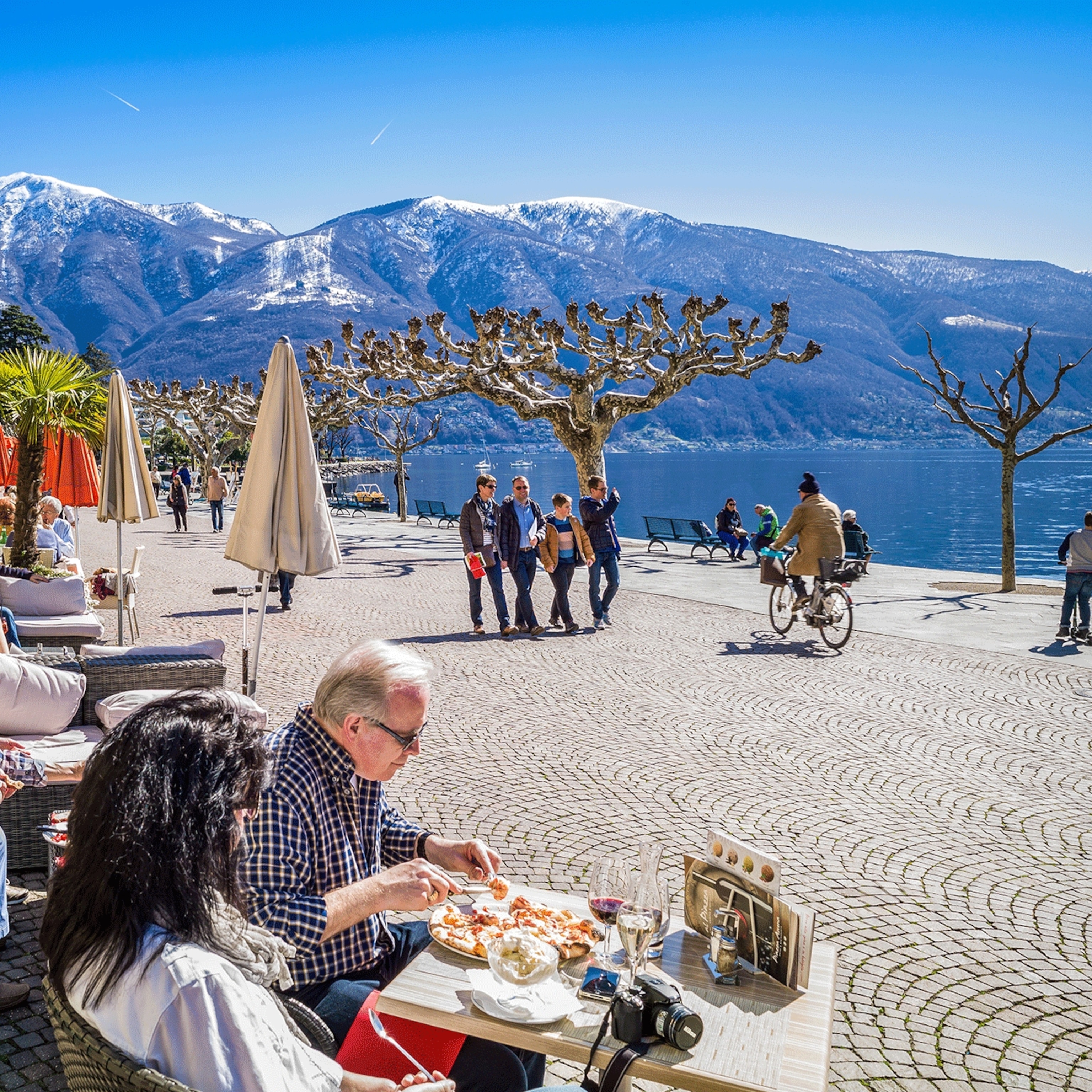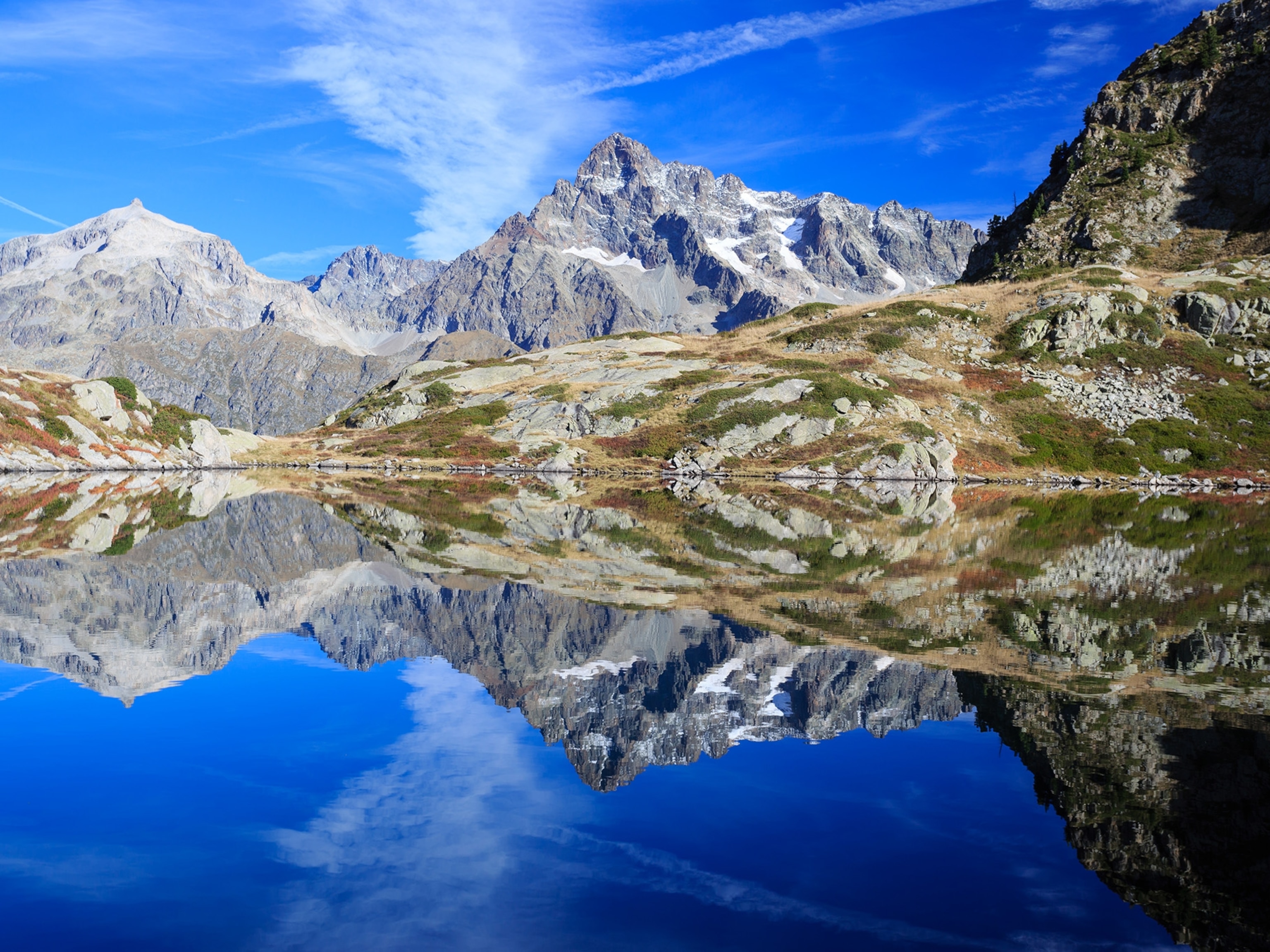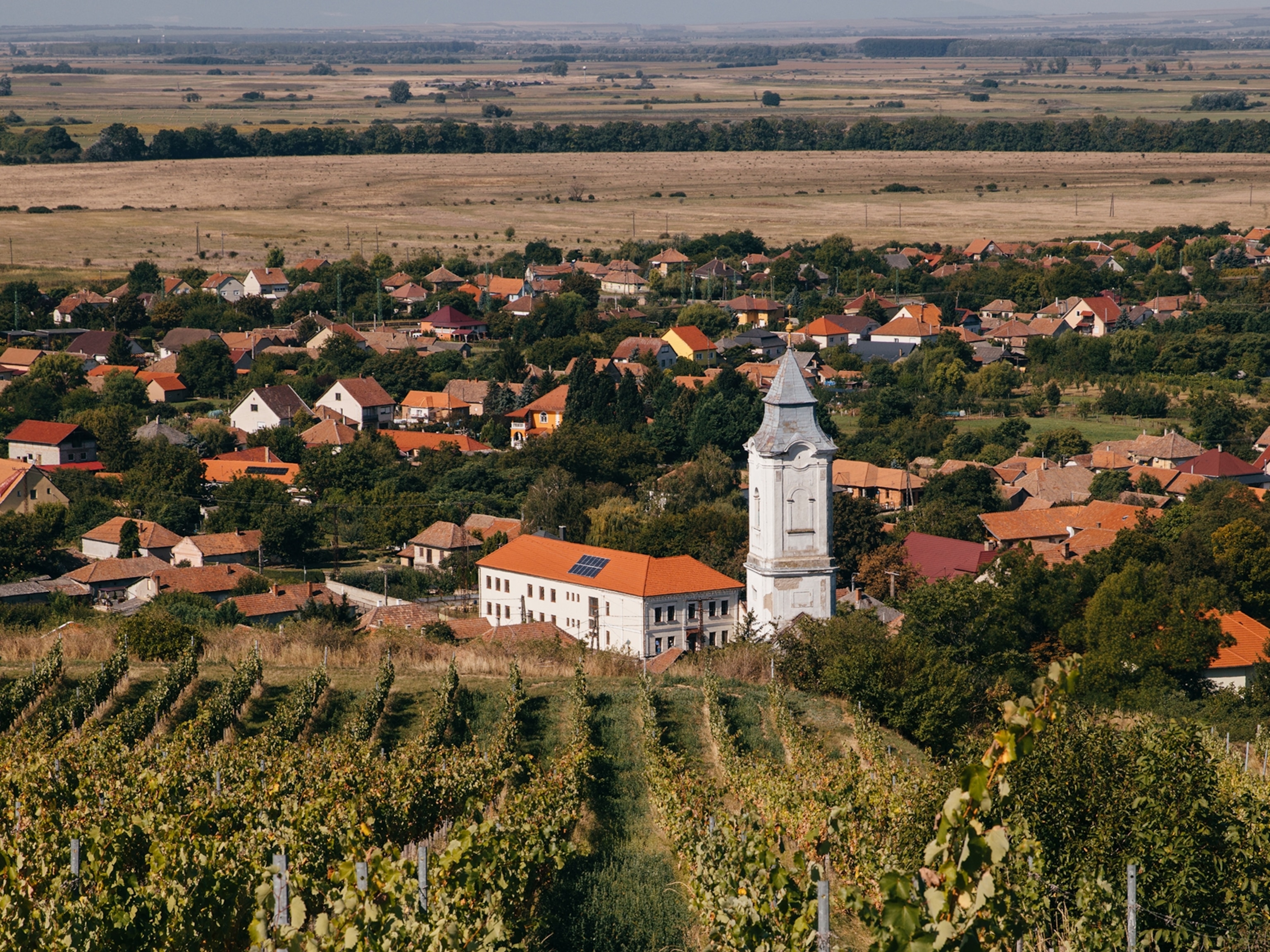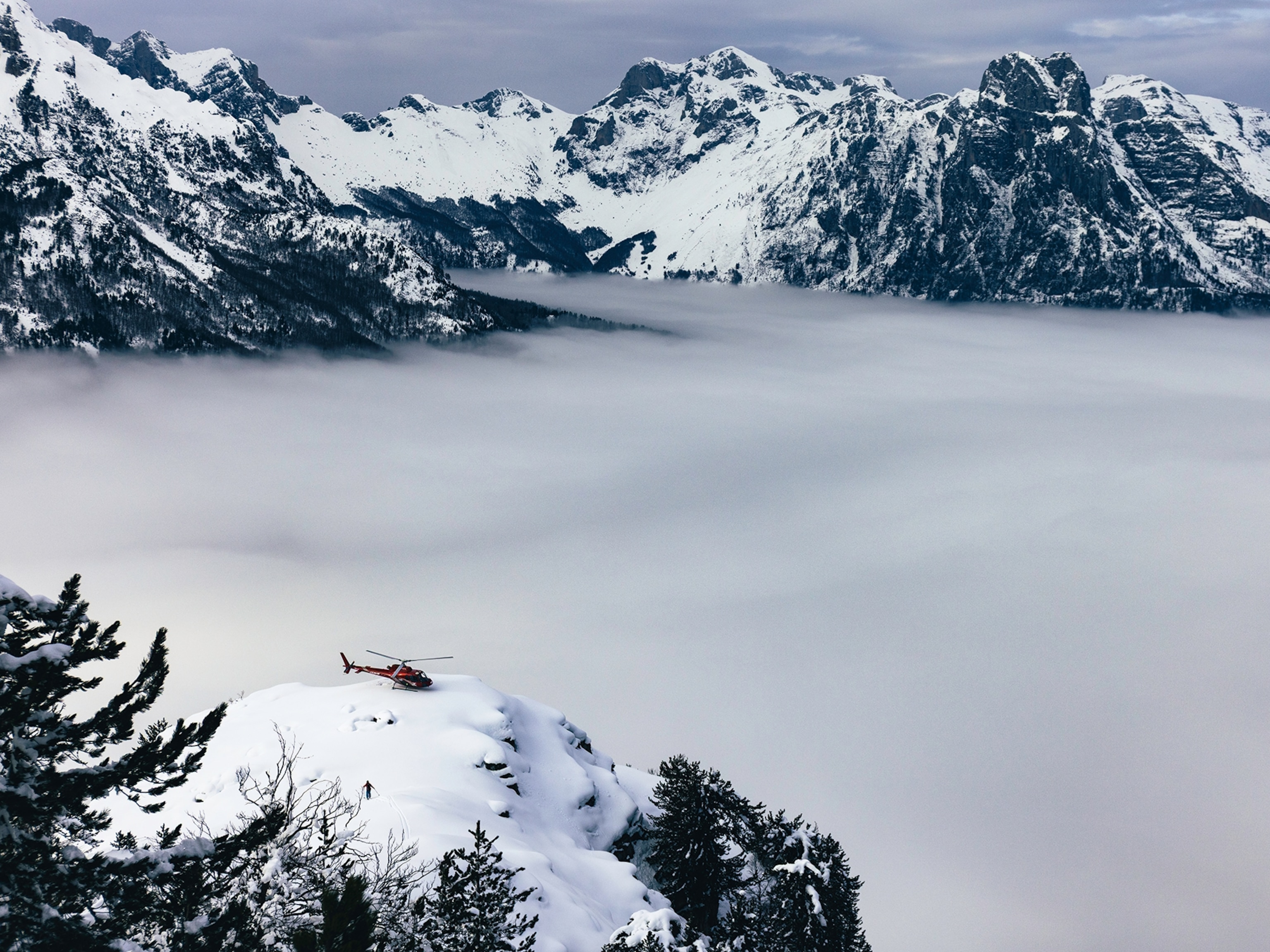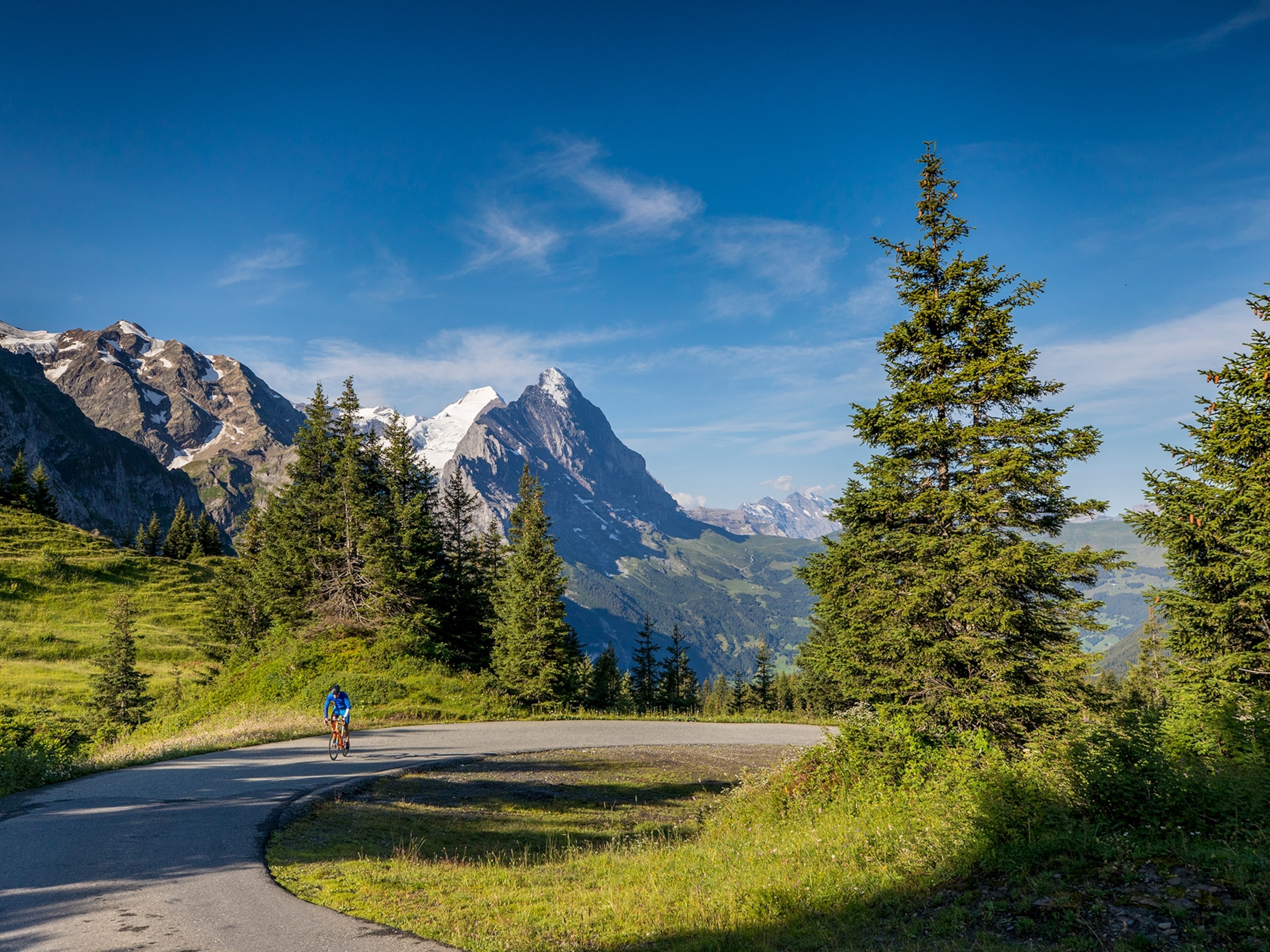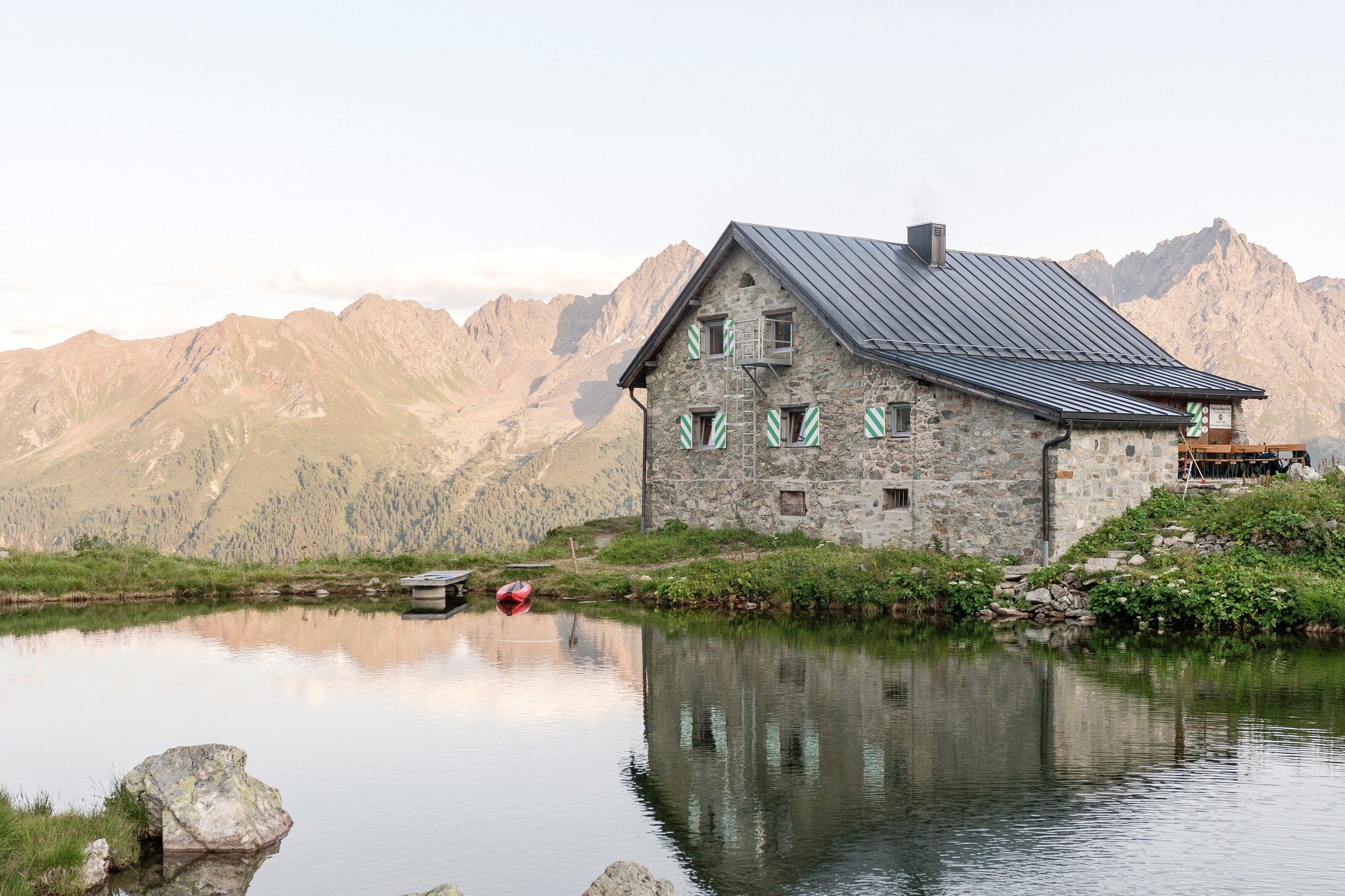
The chefs and innkeepers making Austria's mountain huts a must for food lovers
High in Austria’s Alpine Tyrol region, chefs and wirts — a cross between innkeepers, hosts and landlords — welcome weary walkers to their mountain huts for hearty meals and warm hospitality.
“Further, further, further! Only three more hours,” yells chef Martin Sieberer. We’re at an altitude of over 6,500ft, hiking through sun-drenched alpine meadows to Almstüberl, an almhütte (mountain hut) where, for the summer, Martin is curating the menu. Beef, speck and vegetables infused with mountain herbs is just the kind of hearty dish you’d hope for in this part of Austria, and it’ll be my first meal on the Kulinarische Jakobsweg, a series of six challenging hikes across the Paznaun Valley. All of them lead to these rustic huts, where, every summer, highly regarded chefs transform the usually simple gastronomy served here into something closer to haute cuisine.
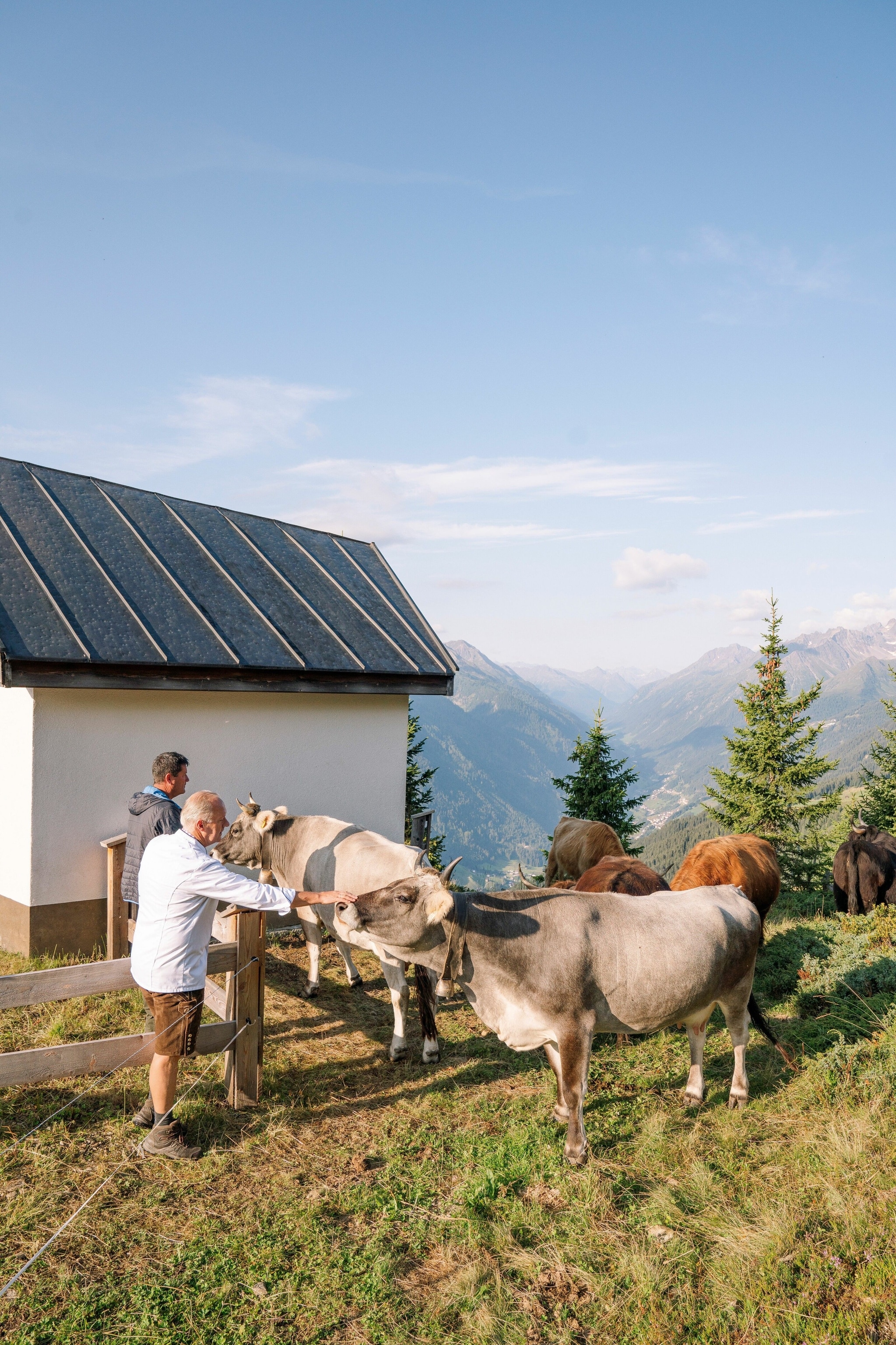
“You have to sweat if you want to eat,” shouts Martin. Wearing a checked shirt and intricately embroidered lederhosen, the chef — who’s garnered numerous accolades, including a Michelin star for his Ischgl restaurant Paznaunerstube (he also owns Heimatbühne restaurant, in the same ski resort village) and Austrian Chef of the Year in 2000. Born in Kitzbühel, Martin is a child of the Alps, at home in the peaks of Tyrol. As we wind our way up the trails, he pauses every so often to pluck wildflowers and wild herbs with childlike glee, saving them to cook with later.
“This is augentrost, a herb with which you make a little tincture and put it on the eyes to calm them. It’s medicinal,” he explains. Alpine rose, he tells me, can be used to make a jelly to serve with cheese. He also shows me yarrow, chives and various types of clove.
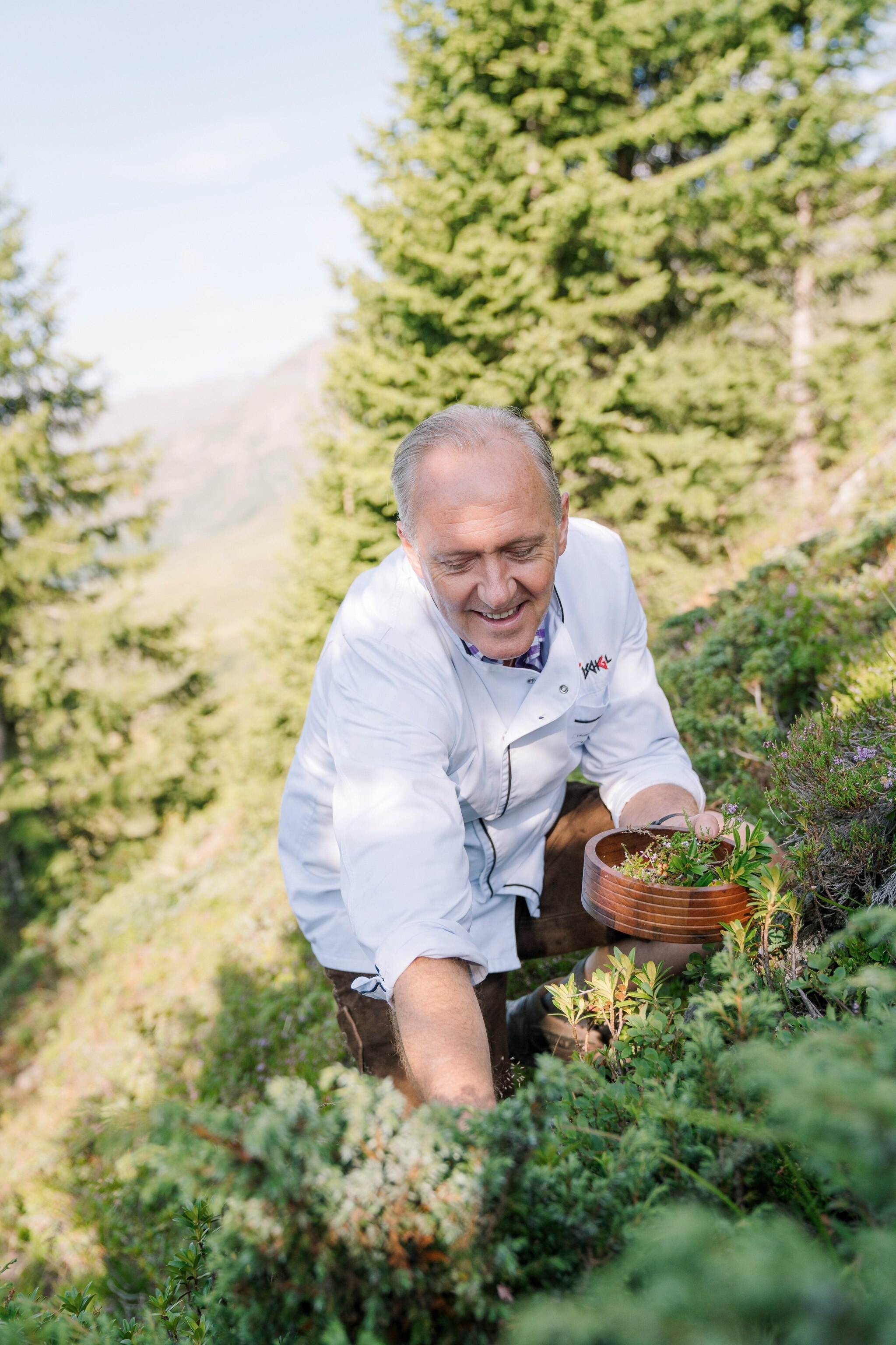
“You can suck on the flower, and it tastes like honey,” Martin says, proffering some yellow sweet clover for me to taste. Initially, all I get is grass — and more grass — until at last, a hint of sugary sweetness. Martin points to some far-off shrubs. “There, where the trees stop, you have a patch with the best lingonberries in the world. There’s a tiny path that leads you to it — lingonberries everywhere. Sometimes you’ll think there’s a dead person lying under the shrubs, but really, they’re just picking berries.”
Several hours later, damp with sweat, we arrive at Almstüberl. The tiny timber cabin, overlooking colonnades of pine and distant, snow-capped peaks, has long served as a refuge for hikers in need of a good meal, a quick rest and incredible views. In the kitchen, Martin prepares herb-roasted beef with roast veg and a potato riebler (a local speciality akin to a loose potato pancake or potato crumble). Each component of the dish, from the carrots to the butter, red wine, meat and freshly foraged wildflowers, comes from the surrounding mountains. I can smell the dish’s earthy scent, and as I bite in, the aromatics intensify. The beef is gamey, thanks to the muscles the cows built up ambling along the mountainside, but also herbaceous and sweetly perfumed.
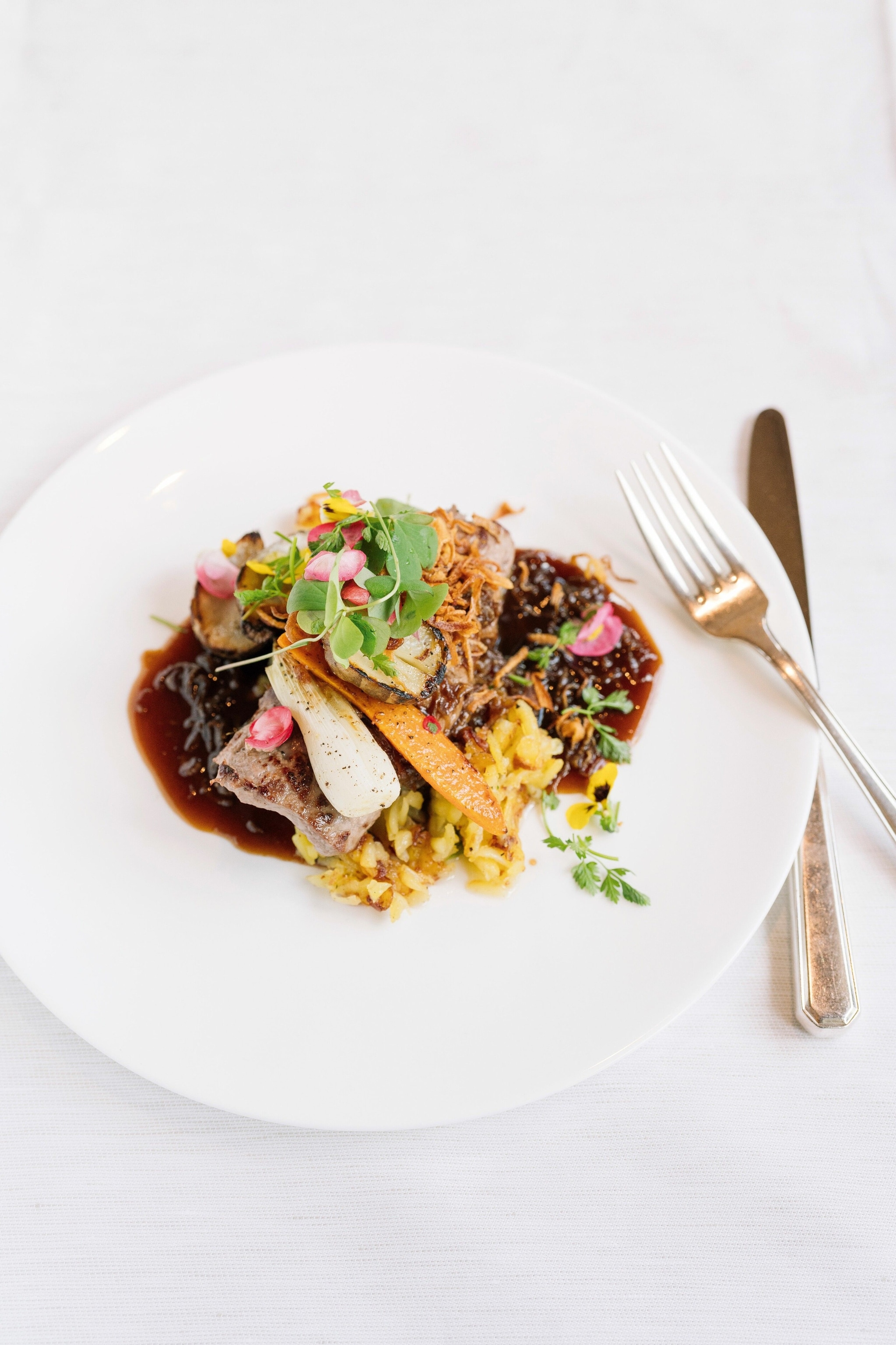
To Martin, a man who’s spent his whole life in Tyrol, curating a menu up here is an honour. These huts are an Austrian institution; for around 2,000 years, cattle farmers have spent summers living up here while their herds graze the mountain pastures. This results in world-class milks, meats and cheeses, which the resident farmers will offer as tasters to anyone passing by — generally for free, although tips are warmly welcomed.
Ever-changing cheeses
This way of life is routine for Hermann Huber, who’s something of a celebrity in the Paznaun Valley. Part chef, part hotelier, part cheesemaker, he’s the king of Paznauner dairy. His Aschenputtel weichkäse (Cinderella soft cheese) was named among the best cheeses in Austria for 2021 at the Wieselburger Messe agricultural fair. His almkäse (a hard, rind-covered cheese) and two of his other cheeses, meanwhile, received near-perfect scores from the judges at the latest International Mountain Cheese Olympics. Hermann even won over Britain’s Guild of Fine Food in 2017, which gave him a gold at the World Cheese Awards for his unusual Zwergerl, a semi-soft cow’s-milk cheese whose production involves being bathed in seven-year-old water. (Hermann believes this adds flavour, and it is indeed a real umami bomb.)
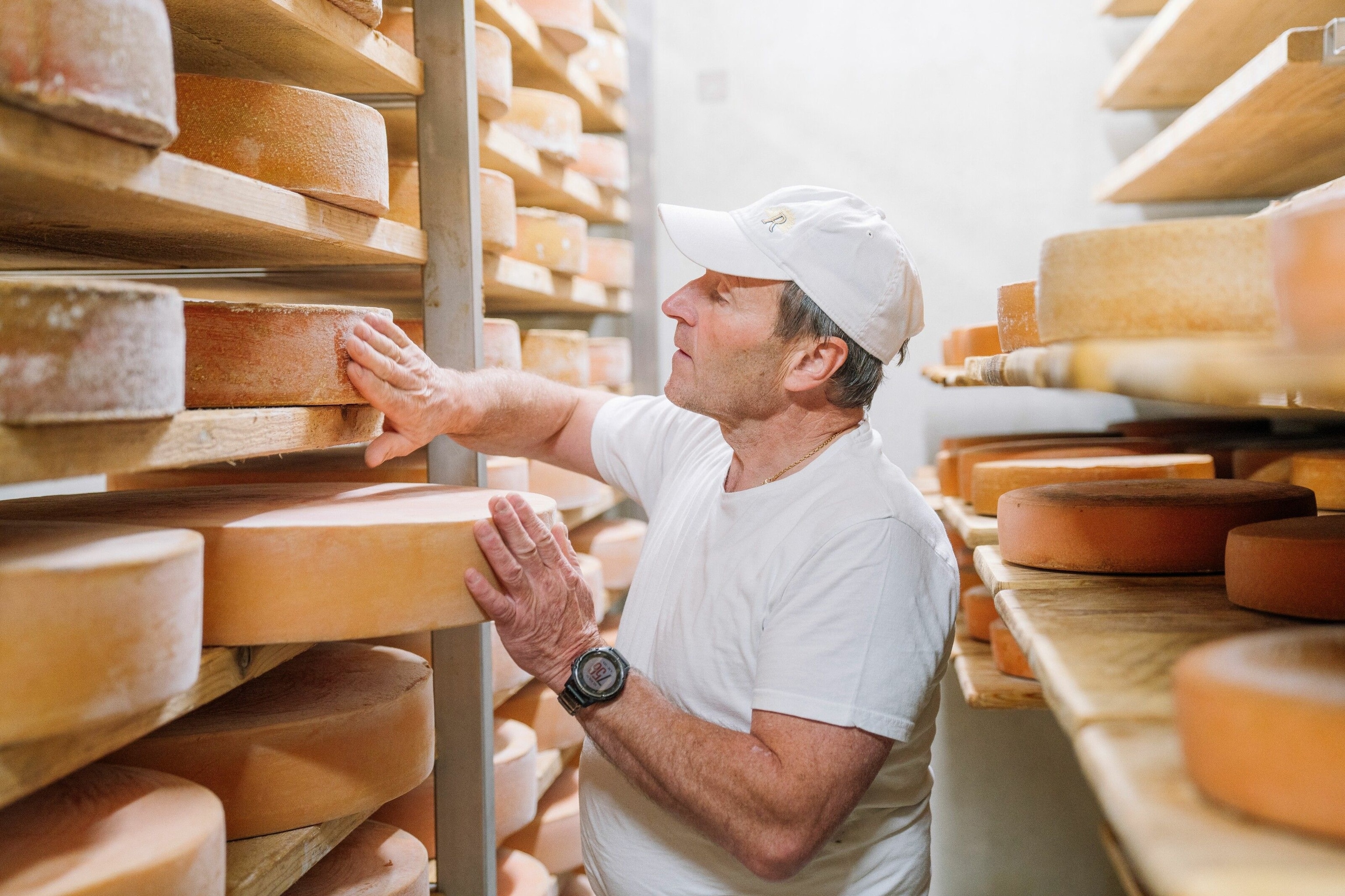
A visit to Faulbrunnalm, Hermann’s farm and almhütte, is the next stop on my gastronomic pilgrimage. It’s just a few peaks away from Martin’s place, and by gondola the journey is easy, but I choose the hard route: an eight-mile hiking trail that begins in the village of Galtür. It takes me alongside turquoise Lake Kopssee, before heading up towards the rocky, cloud-coated ledges of Breitspitze mountain, where the rain somehow manages to slap me from both above and below as I stumble over slippery slabs of stone.
I hear Hermann’s grazing cows before I spot his place, shrouded as it is in cloud. This is where Hermann produces his cheeses, from the ash-coated soft cheeses to an 18-month-old bergkäse (a hard local variety) he has nicknamed ‘Corona cheese’, because he made it during lockdown. There’s also a one-year-old mountain cheese, others infused with saffron or Italian truffle, and a pungent three-year-old hard type, which, while delicious, “you can only eat a small amount at a time,” Hermann laments.

“Cheese needs time and lots of love,” Hermann says. He produces about 30,000kg a year (much of which goes directly to chefs), all by hand. He offers me a taste of his Paznauner almkäse, which, Hermann explains, needs to look as good as it tastes. “Don’t even bother serving a cheese that’s not pretty,” he says. “When cutting in, it should have two holes, nice and round, no cracks or fissures.” Full marks on that front. From there, he stresses mouthfeel, which for the almkäse means a rich, creamy, almost melty quality. Finally, there’s taste: fatty and herbaceous. There are hints of grass and wildflowers and fresh, raw milk. Hermann notes that his cheese, like the Alps, “is a living thing, with microorganisms at work... Because it’s living, it’s ever-changing.” It’s the variable nature of this landscape that makes hiking through it so thrilling. The Kulinarische Jakobsweg trails begin on the dark forest floors of the valley, amid fallen pines and fungi. Yellow signs lead the way upwards, until the trees shrink and make way for grassy knolls. Along the way I spot deer, falcons and seemingly hundreds of cows amid the edelweiss, berries and trumpeting blue and purple petals of gentian. Lucky hikers might also catch a glimpse of mountains goats, boars or even rare wild cats.
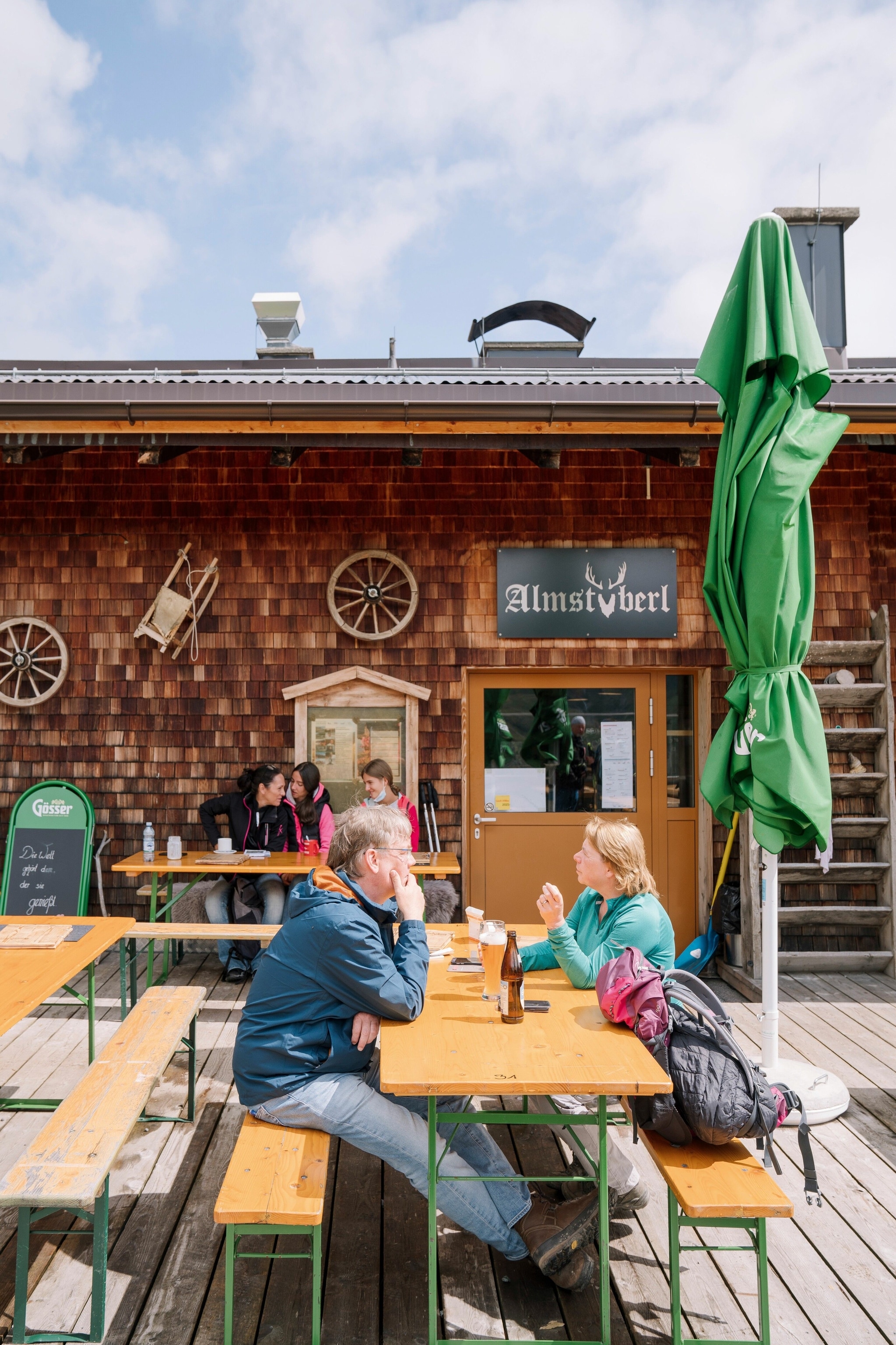
“It’s mystic,” says Benjamin Parth, head chef at award-winning Stüva restaurant in Ischgl. He’s garnered attention as one of the most exciting young chefs not just in Tyrol but in the whole of Austria, having earned the country’s Gault & Millau Chef of the Year title in 2019. At his establishment in town, set menus start at around €100 (£84) and contain exquisite dishes such as a tender scallop carpaccio with tuna tartare and a spoonful of caviar, or Arctic char with gentian foam and potato. The latter is Benjamin’s signature dish — he’s one of the few chefs in the world cooking with the supremely bitter root of the gentian plant, which can be found in the valley but is protected by EU law, with only a handful of people allowed to forage for it.
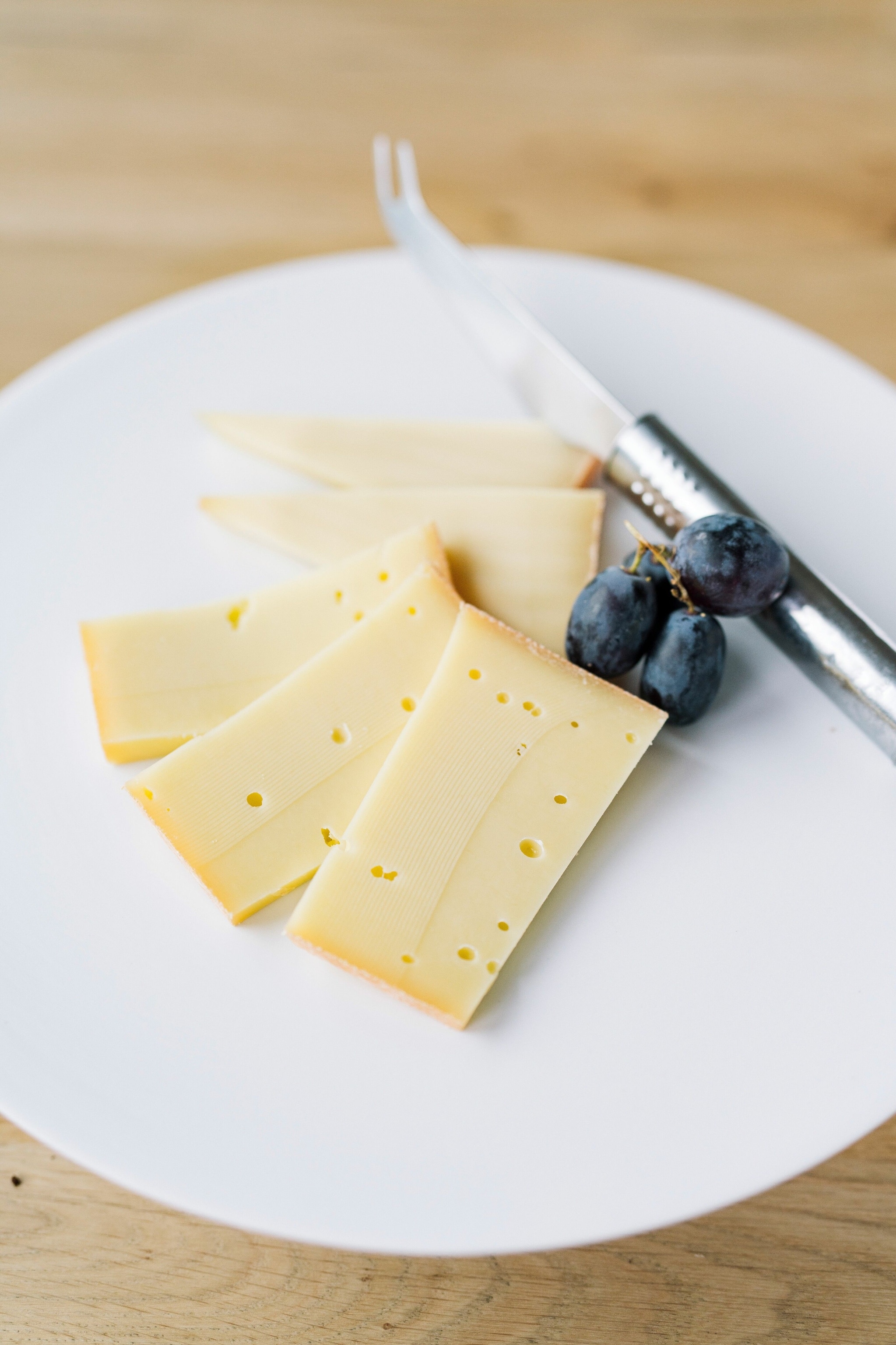
Benjamin is just about the last chef you’d expect to encounter 6,890ft up at the stone built, 113-year-old Friedrichshafener Hütte. Furthermore, in a region known for its beef, cheese, butter and speck, it’s something of a surprise to find him serving a vegan meal. But that’s just Benjamin’s style. “I wanted to try something different, something modern, something that’s distinct from the typical cuisine at the huts,” he says. “But I still wanted the cuisine to be hearty and traditional. It has to fit the hut.”
His main course — forest mushrooms with potato rösti, paprika-spiced sauerkraut and chive sauce — is a contemporary take on the dishes his grandmother would cook. “It’s about bringing in familiar flavours, while also exposing guests to something entirely unfamiliar,” he tells me. The dish is served in epic proportions, far larger than the bite-sized plates Benjamin prepares back in town, and in a presentation style clearly bereft of tweezers.
Three giant slabs of porcini mushroom hug the salty, satisfying potato pancake, stuffed with parasol mushrooms. The hearty helping of sauerkraut that accompanies it is made to his grandmother’s recipe and infused with red pepper and tomato juice; beyond the usual tang it’s also slightly spicy, with the chives enhancing the alpine aromatics. Benjamin is quick to mention this dish isn’t the type of thing that would be served at his restaurant, but rather an interpretation fit for a walker — and so it is.
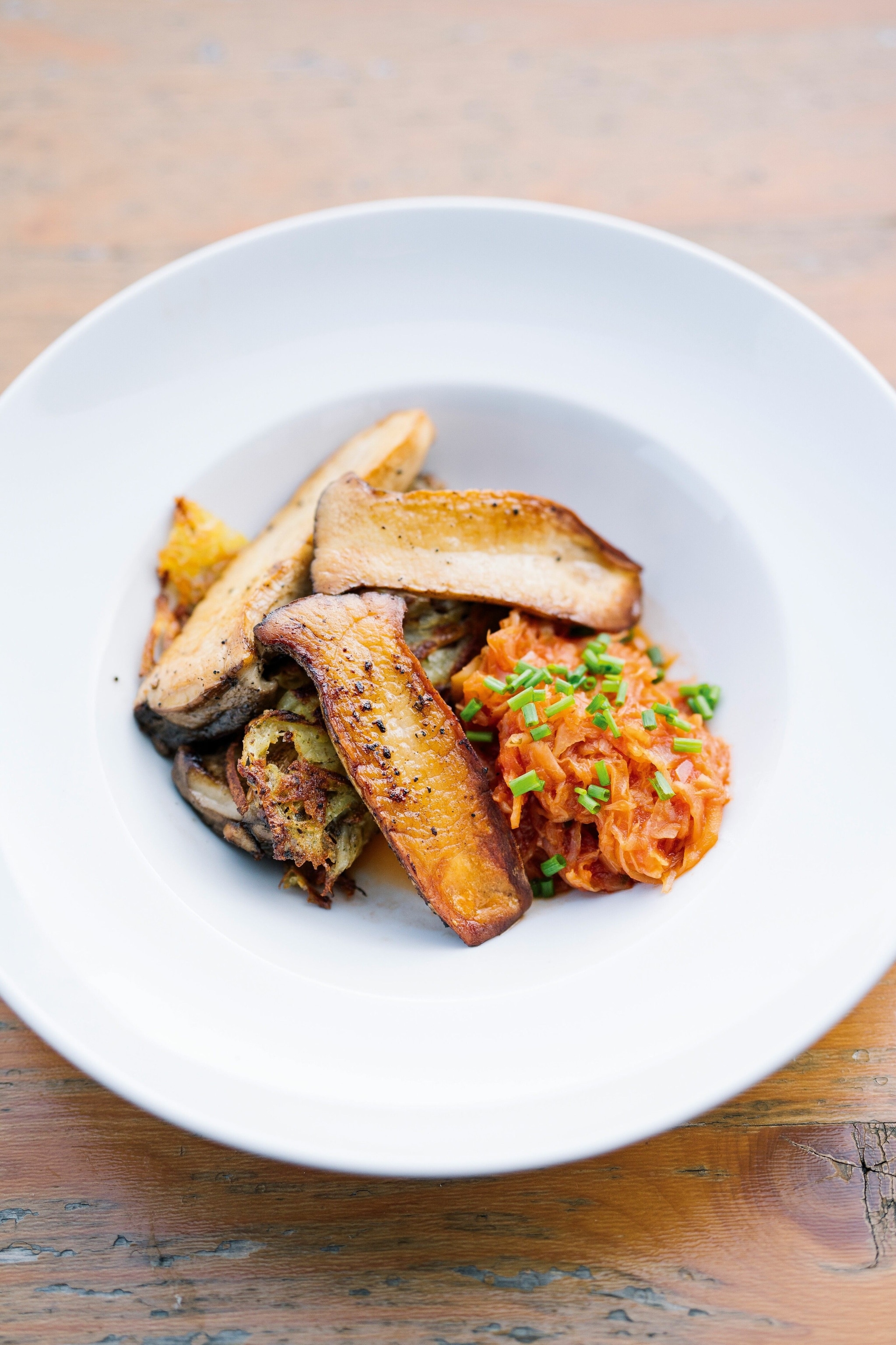
Overflowing with gemütlichkeit
While I’m lucky enough to meet several of the chefs taking part in the Kulinarische Jakobsweg, most visitors don’t encounter them face to face. Aside from those chefs leading the hikes that take place every weekend over the summer, most simply create dishes to be served at their almhütte or restaurant, but aren’t necessarily involved in the day-to-day cookery of those dishes, or in meeting and greeting guests. Heike Mayrhofer, however, couldn’t be more involved. One of the true faces of this culinary event, Heike is the backbone of her hut, Almstüberl. Moreover, she’s the only female wirt (an all-encompassing term for innkeeper, host, publican and landlord) in the Paznaun. For almost a decade, Heike has spent eight months of each year living high up above Kappl, at 6,890ft.
While most of the huts are fairly austere in appearance, Almstüberl overflows with gemütlichkeit (warmth and geniality). Rose-filled flower pots and cutesy iron knick-knacks decorate the wooden terrace that overlooks the valley. At the front entrance hangs a retired pair of Heike’s old lederhosen, which she’s fashioned into a vase. “I had those for 30 years,” she says. Together with her daughter, Jessica, the two embody the dying art of the wirt — which I’m thankful for. My ascent to Almstüberl had been, like most journeys in this part of Austria, beset by temperamental weather. When I’d set off, it was 20C, but within an hour, the temperature had dropped to around 2C and visibility to a few feet as an icy mist descended. This was summertime in Austria but it may as well have been January in Newcastle. Yet, on my shivering arrival at the hut, Heike comes out with a hot-water bottle, coffee and Norwegian carrot cake, made by her son-in-law.
As hikers seek shelter from the weather (dozens arrive within half an hour), Heike welcomes each with the same vivaciousness — be it in German, English or Dutch. Perhaps surprisingly, she’s not actually from Paznaun but from a valley in Ötztal, around 30 miles from here. So how did she come to be running this particular almhütte? “I lost a bet,” she says. “I don’t remember the exact bet, but I lost, and my punishment was to work at an après ski tent up here. I was here for not even two weeks before the mayor offered me the hut. Pure chance.”

For hours, I watch in awe as Heike and Jessica sling plates to hungry patrons — bowls of beef broth with speckknödel (bacon dumplings), herb-roasted beef and the cheesy mountain classic käsespätzle. I tuck into the broth, which is remarkably concentrated in flavour, while remaining light and thin, and the meaty, savoury flavours dance with the smokiness of the dumplings.
When I ask Heike about the Kulinarische Jakobsweg, she tells me she likes that it brings people to the huts who normally wouldn’t come up here, and exposes them to the cooking of famous chefs they wouldn’t otherwise be able to visit — or couldn’t afford to visit. With a wink, she points to a Gault & Millau (the prestigious French restaurant guide) sticker on Almstüberl’s front door. “After nine years, my food’s already known for being delicious,” she says. “We’ve proven ourselves,” adds Jessica.
As I prepare to leave, Heike has prepared an extra dish, her famous kaiserschmarrn with homemade lingonberry jam and apple sauce for dipping. It’s incredible — fluffy pieces of shredded, fried pancake bathed in butter and powdered sugar. I leave completely stuffed, bordering on comatose. What I need is to walk it off — and with the mountain trails stretching out ahead of me, I’m in the perfect place to do just that.

Five culinary finds
1. Enzian schnapps: Aromatic and bitter, this schnapps and its namesake plant (‘gentian’, in English) are synonymous with this region. Gentian thrives at high altitude, but as it takes 10 years to blossom, only a handful of families in Galtür are allowed to forage it.
2. Paznauner almkäse: Produced by only 13 cheesemakers in the region, this cheese is made to a precise set of rules, including that there must be no additives and that all milk used must come from the makers’ own cows, which must eat only Alpine grasses.
3. Tyrolean speck: The star of Tyrolean charcuterie boards, this intensely flavoured ham is cold-smoked and cured in the alpine air for five months.
4. Tyrolean honey: Visit a bienenladen (‘bee shop’) or honigladen (‘honey shop’) to buy one of the many local varieties of honey, such as ‘Alpine rose’, ‘dandelion’, ‘apple flower’, ‘forest’ and ‘linden’, as well as a creamy version made from spring flowers.
5. Spreads: Delis stock an array of locally made sauces, spreads and condiments, including wildflower pesto and herb-filled mustards. Look out for chef Martin Sieberer’s creations, such as ‘Schwarzes Geld’, a mix of mustard seed, apple juice and charcoal.
RECIPE: Porcini in a rösti coating, served with paprika sauerkraut
by Benjamin Parth
Middle Eastern flavours give a modern twist to this Austrian classic. You can prep the sauerkraut and chive sauce a few days ahead, which intensifies the flavours. Gently reheat the sauerkraut before serving.
Serves: 4 Takes: 1 hr 30 mins
Ingredients
10 large porcini or parasol mushrooms, cleaned with a damp cloth and sliced into halves
juice of 1 lemon
3 large potatoes, peeled
vegetable or rapeseed oil, for shallow-frying
fresh alpine herbs (such as cress, chives and parsley), to garnish
For the paprika sauerkraut
2 tbsp rapeseed oil
2 red peppers, peeled and roughly chopped
1 onion, peeled and finely diced
1 garlic clove, peeled and finely diced
200g fresh sauerkraut
4 semi-dried cherry tomatoes
10 white peppercorns
5 juniper berries
2-3 sprigs of thyme
1 bay leaf
700ml tomato juice
1 potato (about 150g), peeled and grated
For the chive sauce
200g hummus
100ml extra-virgin olive oil
1 garlic clove, finely chopped
juice of ½ lemon
1 tsp ras el hanout
1 tsp ground cumin
1 tsp tahini
2 pinches of paprika
Tabasco, to taste
bunch of chives, finely sliced
Method
1. First make the paprika sauerkraut. Add the rapeseed oil to a saucepan and place over a medium heat. Add the pepper, onion and garlic, and sauté for 1 min.
2. Add the sauerkraut, semi-dried tomatoes, peppercorns, juniper berries, thyme sprigs and bay leaf to the pan; season with salt and freshly ground white pepper. Pour in the tomato juice and bring to the boil, then add the grated potato and simmer for about 1 hr, until most of the liquid has evaporated. Remove from the heat and discard the peppercorns, juniper berries, thyme sprigs and bay leaf. Set aside.
3. For the chive sauce, put all the ingredients except the chives into a small bowl, add a pinch of salt and mix well to combine. Stir through the chives and set aside.
4. Place the halved mushrooms into a bowl, add the lemon juice, some salt and freshly ground white pepper, and gently toss to coat.
5. Cut the potatoes lengthwise into thin slices using a mandoline (if you don’t have one, use a knife, carefully). Then, using a knife, cut the slices into fine strips. Add the potato to a bowl and toss with salt and pepper, then squeeze well to remove excess moisture.
6. Portion half of the potato into thin 10cm patties on kitchen paper — you should get four in total. Divide the mushrooms between the patties, then cover each patty with a thin layer of the remaining potato. Press down firmly using a sheet of kitchen paper to seal.
7. Pour the oil into a large frying pan, generously covering the base of the pan. Place over a medium-high heat. In batches, add the rösti and fry for around 5 mins per side, or until golden brown. Transfer to kitchen paper to drain off the excess oil.
8. Spoon the warm paprika sauerkraut on to plates, top with the mushroom rösti and serve with the chive sauce and some herbs to garnish.
ESSENTIALS
Getting there & around
Travel by rail from London St Pancras International to Landeck-Zams, with four changes, in around 13 hours. Alternatively, EasyJet flies from Gatwick to Innsbruck, 45 minutes by train from Landeck-Zams. From here, local towns including Ischgl can be reached by bus, rental car or taxi.
A Silvretta ski pass offers access to buses and gondolas, as well as some spas and climbing opportunities. Certain hotels offer these to guests for free.
Where to stay
Hotel Trofana Royal has doubles from €280 (£238), half board.
Alpenhotel Ischglerhof has doubles from €110 (£94), half board. Both are in Ischgl.
How to do it
Inghams has a week’s half board at Hotel Jägerhof in Ischgl from £839 in summer. Includes flights from Birmingham, a guided walk and daily packed lunch.
More info: paznaun-ischgl.com
Published in Issue 15 (spring 2022) of Food by National Geographic Traveller (UK)
Follow us on social media
Facebook | Twitter | Instagram
